
- •Table of Contents
- •Introduction
- •The 5 Dramatic Throughlines
- •The 6 Conflicts
- •The 21 Genres
- •The Replay
- •Fate
- •The Parallel
- •The Episodic
- •The Journey
- •Interactive
- •Metafiction
- •The Slice of Life
- •Introducing the 55 Dramatic Situations
- •Situations 1 & 2
- •Situations 3 & 4
- •Situations 5 & 6
- •Situations 7 & 8
- •Situations 15 & 16
- •Situations 17 & 18
- •Situations 43 & 44
- •Situations 45 & 46
- •Situations 47 & 48
- •Situations 49 & 50
- •Situations 51 & 52
- •Research
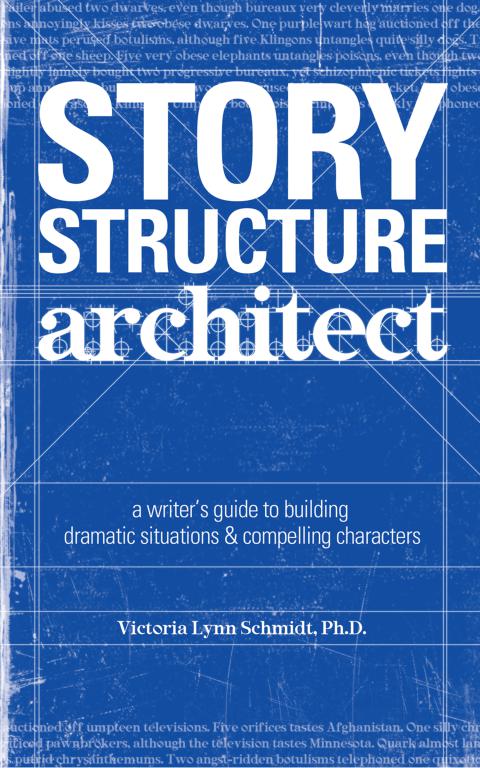


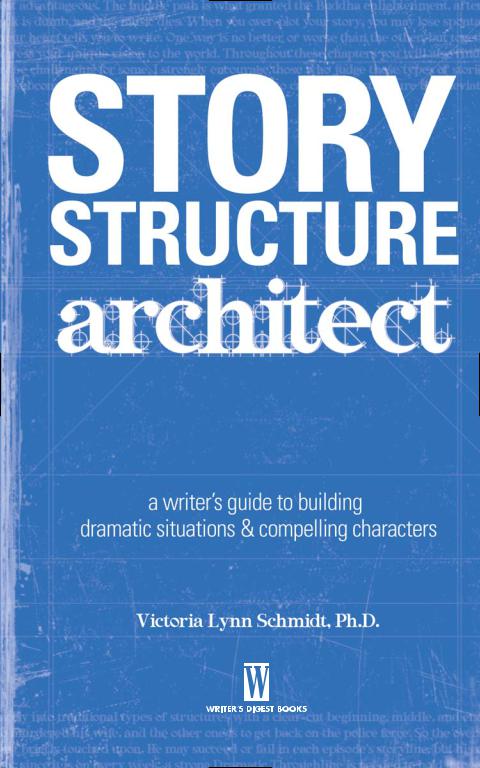
Cincinnati, Ohio www.writersdigest.com

Story Structure Architect© 2005 by Victoria Lynn Schmidt. Manufactured in Canada. All rights reserved. No other part of this book may be reproduced in any form or by any electronic or mechanical means including information storage and retrieval systems without permission in writing from the publisher, except by a reviewer, who may quote brief passages in a review. Published by Writer's Digest Books, an imprint of F+W Publications, Inc., 4700 East Galbraith Road, Cincinnati, Ohio 45236. (800) 289-0963. First edition.
09 08 07 06 05 |
5 4 3 2 1 |
Distributed in Canada by Fraser Direct 100 Armstrong Avenue
Georgetown, ON, Canada L7G 5S4 Tel: (905) 877-4411
Distributed in the U.K. and Europe by David & Charles
Brunel House, Newton Abbot, Devon, TQ12 4PU, England
Tel: (+44) 1626 323200, Fax: (+44) 1626 323319
E-mail: mail@davidandcharles.co.uk
Distributed in Australia by Capricorn Link
P.O. Box 704, Windsor, NSW 2756 Australia
Tel: (02) 4577-3555
Library of Congress Cataloging-in-Publication Data
Schmidt, Victoria
The story structure architect : a writer's guide to building dramatic situations and compelling characters / by Victoria Lynn Schmidt.-- 1st ed.
p. cm.
Includes bibliographical references and index. ISBN 1-58297-325-3 (pbk. : alk. paper)
1. Fiction--Technique. 2. Plots (Drama, novel, etc.) 3. Characters and characteristics in literature. I. Title.
PN3378.S36 2005 2005000590 808.3--dc22
Edited by Michelle Ruberg
Designed by Lisa Buchanan-Kuhn & Claudean Wheeler
Cover design by Lisa Buchanan-Kuhn
Production coordinated by Robin Richie

Dedication
To my second family—Mike, Cathy, Cindy, Mike, Kevin, and Matt. Thanks for being there.
To Cyndi, Cathy, Carol, and Maggie. Thanks for creating stories with me all those years ago. Wally, Anne, Eileen, and Paul, too!
And also to Mom, Dad, Tom, Oliver, Angie, Kim, and Barbie. Bobby, Ada, Debbie, Randall, Randy, and Pam
About the Author
Victoria Schmidt is the author of the popular book 45 Master Characters: Mythic Models for Creating Original Characters. She is a graduate of the film program at UCLA and the MFA screenwriting program at Loyola Marymount University, and she holds a Ph.D. in psychology. Visit her Web site at www.CharactersJourney.com for more information on upcoming books and writing resources.
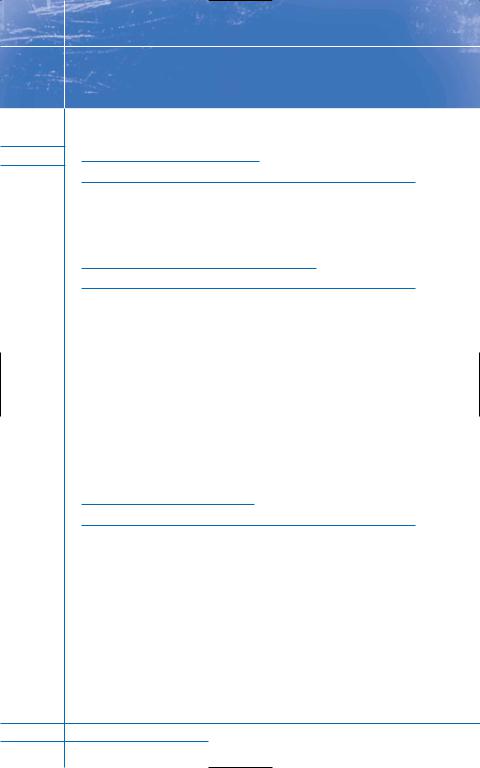
 Table of Contents
Table of Contents
Introduction ................................................................................ |
1 |
Part 1: Drafting a Plan |
|
How to Use This Book ................................................................ |
4 |
The 5 Dramatic Throughlines .................................................... |
9 |
The 6 Conflicts .......................................................................... |
15 |
The 21 Genres ............................................................................ |
20 |
Part 2: Building the Structure |
|
How to Use the 11 Master Structures .................................... |
28 |
The Roller Coaster Ride .......................................................... |
34 |
The Replay.................................................................................. |
39 |
Fate.............................................................................................. |
44 |
The Parallel ................................................................................ |
49 |
The Episodic .............................................................................. |
55 |
The Melodrama.......................................................................... |
60 |
Romance .................................................................................... |
66 |
The Journey................................................................................ |
73 |
Interactive .................................................................................. |
82 |
Metafiction.................................................................................. |
88 |
The Slice of Life ........................................................................ |
93 |
Part 3: Adding Stories |
|
Introducing the 55 Dramatic Situations ........................................ |
99 |
Situations 1 & 2 |
|
Supplication and Benefaction .................................................... |
103 |
Situations 3 & 4 |
|
Deliverance and Sojourn............................................................ |
109 |
Situations 5 & 6 |
|
Vengeance for a Crime and Rehabilitation ................................ |
115 |
Situations 7 & 8 |
|
Vengeance Taken for Kindred Upon Kindred and |
|
Appearance of a New Kinsman.................................................. |
121 |

Situations 9 & 10 |
|
Flight and Pursuit........................................................................ |
128 |
Situations 11 & 12 |
|
Disaster and Miracle.................................................................. |
134 |
Situations 13 & 14 |
|
Falling Prey to Cruelty or Misfortune |
|
and Becoming Fortunate ............................................................ |
140 |
Situations 15 & 16 |
|
Revolt and Support .................................................................... |
145 |
Situations 17 & 18 |
|
Daring Enterprise and The Healing Journey .............................. |
151 |
Situations 19 & 20 |
|
Abduction and Reunion .............................................................. |
158 |
Situations 21 & 22 |
|
Enigma and Invention ................................................................ |
164 |
Situations 23 & 24 |
|
Obtaining and Letting Go ............................................................ |
170 |
Situations 25 & 26 |
|
Enmity of Kinsman and Hero to Kinsman.................................... |
176 |
Situations 27 & 28 |
|
Competition and Concession...................................................... |
182 |
Situations 29 & 30 |
|
Adultery and Fidelity .................................................................. |
188 |
Situations 31 & 32 |
|
Madness and Genius.................................................................. |
194 |
Situations 33 & 34 |
|
Imprudence and Caution ............................................................ |
200 |
Situations 35 & 36 |
|
Crimes of Love and Sacrifice for Love........................................ |
206 |
Situations 37 & 38 |
|
Slaying of Loved One and Conviction ........................................ |
212 |
Situations 39 & 40 |
|
Self-Sacrifice and Self-Preservation.......................................... |
218 |

Situations 41 & 42 |
|
Discovery of Dishonor of Loved One and |
|
Discovery of Honor of Loved One .............................................. |
224 |
Situations 43 & 44 |
|
Obstacles to Love and Unconditional Love ................................ |
229 |
Situations 45 & 46 |
|
Conflict With a God and Supernatural Occurrence.................... |
235 |
Situations 47 & 48 |
|
Mistaken Judgment and Intuitive Judgment ............................ |
241 |
Situations 49 & 50 |
|
Remorse and Empathy................................................................ |
247 |
Situations 51 & 52 |
|
Loss of a Loved One and Rescue of a Loved One ...................... |
253 |
Situations 53 & 54 |
|
Odd Couple and Fish Out of Water ............................................ |
258 |
Situations 55 |
|
Blank Situation Template............................................................ |
263 |
Part 4: Finishing Touches |
|
Research .................................................................................. |
266 |
Index ........................................................................................ |
273 |

Introduction
“Trust that still, small voice that says, ‘This might
work,’ and try it.”
–DIANE MARIECHILD
Story Structure Architect has really been a labor of love for me, and I am honored to share it with you. While creating this book, it almost seemed as if it existed in the ether just
waiting to be plucked down and written. Many times I thought I would write about one subject only to have several other subjects reveal themselves. Once the Writer’s Digest team suggested the addition of story structures, as opposed to standard plots, the book really took off in some exciting directions.
I guess this is what writing is all about—plotting a story, or in the case of nonfiction, mapping a direction to go in and then leaving room to allow the story to take you in the direction it wants to go. There’s a certain balance to be found between demanding control over a piece of work and surrendering to the writing process and seeing what develops organically.
There are many writers who choose sides between control and surrender, which may compromise their work. They strictly obey plotting rules and structure or they strive to not have plot or direction at all.
But, as yoga philosophy teaches, I have always found the middle path between two extremes to be the most advantageous. The middle path is what granted the Buddha enlightenment, after all! When the Buddha first participated in extreme meditation practices that did not grant him enlightenment, he left his teachers and sat by the side of a lake praying for guidance on what to do next. Suddenly a man and his son in a small boat paddled past the Buddha. The father was teaching his son how to play a sitar, and his words floated toward the Buddha, answering his dilemma:
Tune the sitar neither low nor high.
The string overstretched breaks, the music flies, The string over slack is dumb, and the music dies.
Introduction 1

When you over-plot your story, you may lose spontaneity and feel like a slave to your overly detailed outline. When you build your story as you go, you tend to end up with a ton of subplots and loose ends that can’t be tied up and a character arc that flatlines.
You need to have some direction as to where you are going, but you also need to feel free to write what your heart tells you to write. One way is no better or worse than the other, but together they can compliment and enhance each other.
I hope this book helps you discover your own writing style, somewhere in the middle path, so you can express your unique vision to the world.
There is a vitality, a life force, an energy, a quickening, that is translated through you into action, and because there is only one of you in all time, this expression is unique. And if you block it, it will never exist through any other medium and will be lost.
–MARTHA GRAHAM
2Story Structure Architect

Part 1 |
DRAFTING
A PLAN

How to Use
This Book
“Life consists of small things, just your ego goes on saying these are small things. You would like some great thing to do—a great poetry. You would like to become Shakespeare or Kalidas or
Milton. It is your ego that is creating the trouble.
Drop the ego and everything is creative.”
–OSHO
Within these pages you will find 5 Dramatic Throughlines, 6 Conflict Types, 21 Genres, 11 Master Plot Structures, 55 Master Dramatic Situations, and several
Research guidelines. In short, you will find all the assistance you need to be the architect of a wonderful yet unique story.
Throughout these chapters you will also find many questions to answer when developing your story. I present a lot of information in the form of questions to allow you the creative room to make your story unique, to make it from who you are as you answer these questions. Questions make you think, after all, and they get the creative juices flowing as you explore possibilities. I find this to be a much more effective teaching tool than espousing rules to be memorized and followed.
There are also sections on anti-structure stories such as Metafiction and Slice of Life. These sections may be challenging for some. I strongly encourage those who judge these types of stories as “wrong” or “lacking” to watch the film examples given.
When you grow up in a westernized culture, the traditional plot structure becomes so embedded in your subconscious that you may have to work hard to create a plot structure that deviates from it. Sometimes just watching a film created in another culture can be tough for westerners because it usually deviates from the traditional westernized Aristotelian structure.
4Story Structure Architect
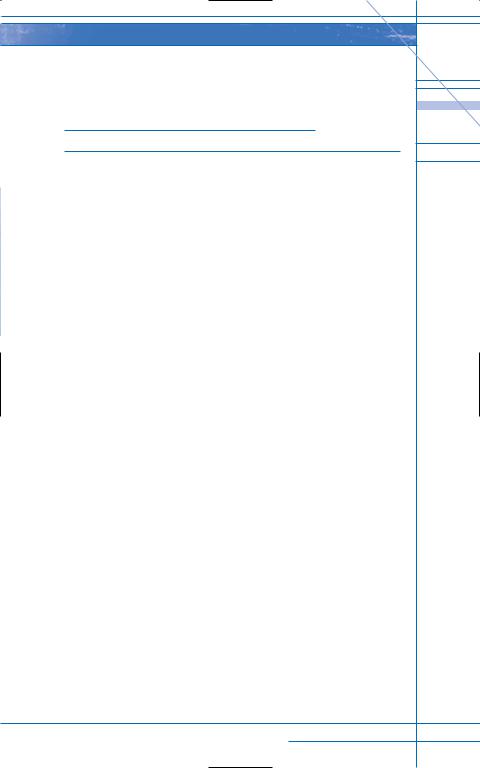
Understand this and keep your mind open when reading these sections. Just because a piece doesn’t conform to the model you are used to does not make it bad or wrong.
Plot Driven vs. Character Driven
Since many new writers have a hard time understanding the difference between plot-driven and character-driven pieces, I want to go over it here before we get started since I use these terms many times throughout this book.
PLOT DRIVEN
In a plot-driven story the events of the story move the story forward and cause the character to react to those events. Characters are secondary to the plot. They act in accordance with the plot and do not create events or situations on their own.
In a sense, the plot takes over like a tornado. If a tornado suddenly comes through a town out of nowhere, the characters can’t stop it; they have to brace themselves and react to what ever happens around them. They don’t cause the tornado—the tornado causes them to react to it.
CHARACTER DRIVEN
In a character-driven story the character moves the story forward through action and choices. She initiates the events of the story and causes the events to happen. Each scene is instigated by the characters within it.
If a character chooses to stay home one day and work in her garden, no event or situation will stop her from doing so, but another character may try to make her feel guilty for it. This may cause her to decide not to garden, but it is totally her choice even if it seems like someone else is manipulating her.
If a tornado comes through town, the characters will always have the time needed to decide what to do. The focus is on the characters and how and why they make their decisions to stay or leave. These decisions have the power to move the plot in different directions. The characters have options and choices that affect the outcome.
INDEPENDENCE DAY VS. SIGNS
Think of the films Independence Day and Signs. Both are about aliens coming to take over Earth. At first glance this type of story may seem like a plot-driven story, pure and simple. It’s very high-concept.
But while the characters in Independence Day react to the events
How to Use This Book |
5 |

around them (plot driven), the characters in Signs create the events around them and are the main focus of the story (character driven). They even have issues and problems to deal with outside of the aliens coming to visit. They learn lessons from their experience and grow stronger as a family. The faith of Mel Gibson’s character plays a huge role in the film, and all characters are asked to confront deep issues about what is happening around them. I encourage you to rent both films to really understand the difference between plotand character-driven stories.
Using This Book
Within this book are six decisions for you to make to create a wonderfully well-developed structure for your story. These six decisions are ones you have probably made before when writing a story but just weren’t conscious you were making them at the time. Now that you will be conscious of them, you can make more informed decisions and perhaps flesh out your story much more quickly when you know the right questions to ask yourself:
1.What Dramatic Throughline should I use?
2.What type of Conflict works best for my story?
3.Which Genre should I select?
4.What Structure Model works best?
5.How many Situations will I use?
6.How much Research should I conduct?
Selecting a Dramatic Throughline
A Dramatic Throughline is the main direction of the story. It is not the goal, story, or theme but the basic thrust of the plot. It asks the central question that keeps the reader reading.
Every time you come up with a story idea you already have decided on a Dramatic Throughline. You know if you want the main character to be successful or not; you just may not have known this was called a Dramatic Throughline or that there were other options available. Although most stories are about happy, successful characters, you can choose to have your characters fail in the end.
There are five types of Dramatic Throughlines:
1.The main character succeeds.
2.The main character is defeated.
3.The main character abandons his goal.
6Story Structure Architect

4.The main character’s goal is undefined.
5.The reader creates the goal.
Even if the story you are working on is plot driven, the Dramatic Throughline is still all about the character and his goal.
Jurassic Park is very plot driven, yet it is the characters’ goal of surviving that keeps the story alive.
There would be no story at all without characters. The character’s goal is in direct relationship to the plot. The goal is either conceived by the character (character driven) or the goal is pushed upon the character by the plot (plot driven), but either way it is still the character’s goal.
Selecting a Conflict
Once you know your Dramatic Throughline you can then select the Conflict you would like to predominately use throughout your story. Conflicts sustain and reinforce the theme. There are six Conflicts:
1.Relational Conflict
2.Situational Conflict
3.Inner Conflict
4.Paranormal Conflict
5.Cosmic Conflict
6.Social Conflict
Conflict, at its core, is the opposition of forces that serve to advance the plot. It can be between people, about ideas, or from natural or man-made circumstances. In some stories and even individual scenes, several different types of Conflict are present at the same time:
Perhaps a young man wants to move away from his family and they are very upset with him about it (Relational Conflict). He is torn by feelings of guilt about his decision (Inner Conflict). He wants to move in with his girlfriend but the society he lives within shuns such a thing (Societal Conflict) and so does his religion (Cosmic Conflict).
Selecting a Genre
Twenty-one Genres are listed, beginning on page twenty, to help you decide what type of Genre, or combination thereof, would be best for your story. Perhaps you have had one type of Genre in mind
How to Use This Book |
7 |
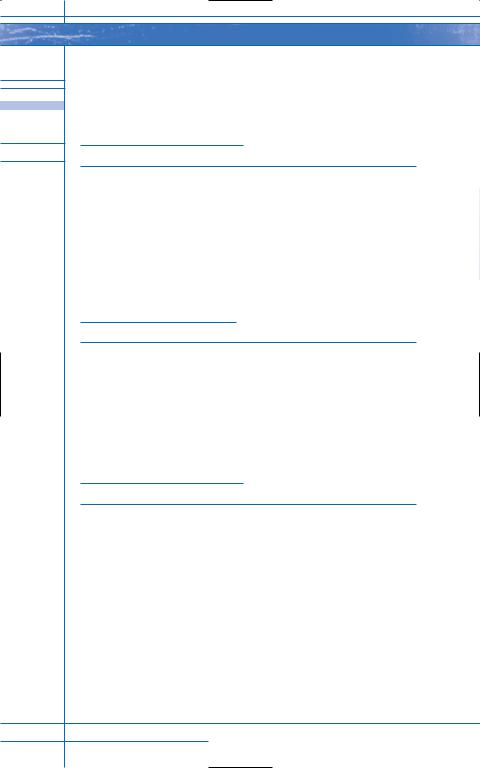
and now find a different one more suited to your story. The choice of Genre will greatly influence your story. Think of dark comedies, for example: When a serious, often morbid horror story is treated like a comedy, the whole feel and subtext of the story changes.
Selecting a Structure
Eleven Master Structures are outlined in detail for you to explore. The first six structures—Roller Coaster, Replay, Fate, Parallel, Episodic, and Melodrama—are more traditional in nature, closely following Aristotle’s three-act structure design.
The next two—Romance and Journey—are based on structure content rather than structure design. The beginning, middle, and end are there, but how they develop is the “content” difference.
The final three—Interactive Fiction, Metafiction, and Slice of Life—are somewhat anti-structure in design.
Selecting a Situation
Next you will find chapters on the 55 Dramatic Situations. As you will see in the introduction to this section, these are based on Georges Polti’s work, where he found thirty-six dramatic situations to use in plotting. An explanation on how I developed the additional nineteen situations will be found there.
These situations are used to add drama and spice to the oftenlagging second act. They can be used as a story, subplot, or incident— whatever you need at the time.
Conducting Research
Finally you will see a section on Research that will help you make the most of the story you have created. Punching up the setting, tone, and character to full effect is what will make your story stand out from all the rest.
For example, instead of writing about a young man in a suit just starting his career, Research can lead you to write about a more specific type of character whose father grew up during the Great Depression and instilled a deep mistrust of financial institutions and the government into his son. Now we have some conflict brewing. Perhaps this mistrust comes into direct conflict with something his boss is asking him to do.
Together these six decisions will help you find new and interesting elements to add to your story.
8Story Structure Architect
